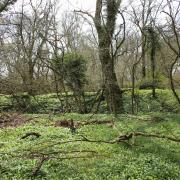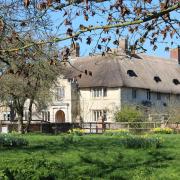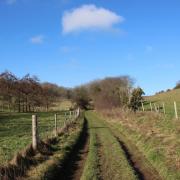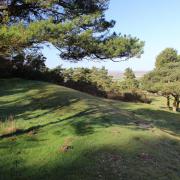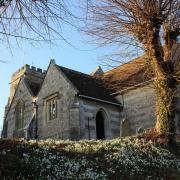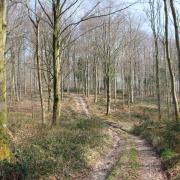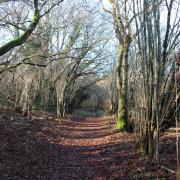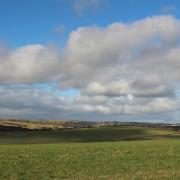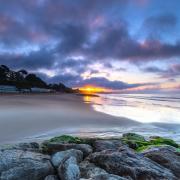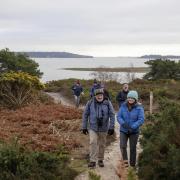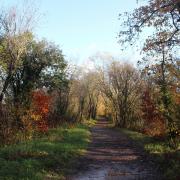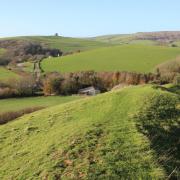Edward Griffiths seeks out remnants of Bournemouth’s ancient heath and the home of a writer who captured 1880s rural social history in her Larkrise to Candleford triology
Bournemouth’s rapid growth from its beginnings in 1812 needed vast amounts of bricks. Men came from miles away, with their families, to dig clay-pits and keep kilns burning all over the heath north of Bournemouth’s coast. In turn, the workers needed homes, food and drink, clothing and tools, schools and places of worship, all of which meant more building and more bricks.
Bournemouth kept expanding, eating up more common lands, heath and farmland. The chief landowners, taking advantage of the 1802 Christchurch Enclosure Act, were the Earl of Malmesbury and the Reverend George Brice who both wanted land for farming. Petitions saved substantial areas for rights of turf-cutting and cattle grazing, and this walk explores pleasant suburbs to find remnants of heath which became parks and public open spaces. We follow what was once an ancient heath track, now a road lined with modern shops, and we learn about Flora Thompson, author of Lark Rise to Candleford who called this area home when her husband worked here as a post office clerk.
Information
• Distance: 4 miles/6.5 km
• Time: 3 hours
• Exertion: Easy to moderate
• Start: Redhill Park car park, Redhill Drive, Bournemouth (Grid Ref: SZ083952)
• Map: OS Landranger Sheet 195
• Public Transport: Morebus 32. Yellow Bus 25, 36
• Dogs: On leads at all times
• Refreshments: Moordown has plenty of cafés, restaurants and inns
The walk
1. Return to the road and turn left. With Redhill Park left, continue to Ensbury Park Hotel. Turn right into Columbia Road. Keep straight on. Just before a left bus pull-in, take the Tarmac path away from the road with the left hedge. Across the open space, continue through the pleasant estate, emerging on Hibberd Way into Ensbury Avenue. Turn right. Cross to Slades Farm Open Space. Take the path along left Bournemouth Learning Centre’s fence and into open space. Towards Bournemouth Velodrome‘s Olympic-sized 250 metre banked track, turn right passing the right playground. At the next fork, bend left to five-ways junction. Now, turn sharp left along the path with the Velodrome left. Keep straight on. After the right wildlife pond, continue on the ‘Footpath No.8 Boundary Road’ around derelict White Farm. Continue to Boundary Road.
2. Cross on the crossing and bear right into un-signed Fernside Road. Continue, crossing Greenwood Road, to Withermoor Road, street names all reflecting the heathland origins. Turn right. In 50 yards, reach No.2 Edgehill Road on the left corner. Flora Thompson lived here 1909-1915 with post office clerk husband John, their first child, Winifred Grace, christened in 1903, and son Henry who was born here in 1909. Arriving from Twickenham, their first, smaller, Bournemouth home was No.4 Sedgley Road. After a final move to Frederica Road, they left for Liphook in Hampshire in 1916, then to Dartmouth in Devon in 1927 when John was promoted to Postmaster. Lark Rise was published 1939, followed by Over to Candleford 1941 and Candleford Green 1943. Flora died in Brixham, Devon in 1947 before Volume Four, Still Glides the Stream was published.
3. Frederica Road is opposite. Continue the full length of Withermoor Road, passing Sedgley Road second right. Reaching Wimborne Road, turn left. Walk to ‘The Parkstone and Heatherlands’ inn. Turn right into Latimer Road. Notice the steep hill with a deep hollow behind the left houses. Up to Cranmer Road, turn left. Passing artisans’ cottages, continue into the steep dip down to Luther Road. Crossing, notice Luther Road ascending to your left. Continue, ascending Cranmer Road. These slopes and hollows were formed by extensive clay-pit workings. Joining Calvin Road, bend left and pass the Coptic Orthodox Church right. Reaching Wimborne Road again, opposite Winton Christadelphian Church, turn right. Pass The Talbot inn on Pine Road corner.
4. Pass Winton Library, where Flora Thompson loved reading Greek and Roman classics in translation. In 1911 she won an essay competition in The Ladies Companion for a 300-word essay about Jane Austen, which inspired her to start writing short stories. Pass the Arts University Bournemouth and Victoria Parade’s row of shops with accommodation above, built on the site of old Winton Farm. After Victoria Park Road, pass St John the Baptist Church, finished in 1874. The next parade, St John’s Buildings, is faced with white faience. Pass Ensbury Park Road traffic lights. On your right, Coronation Avenue corner marks where John Tregonwell built Moordown’s first house, a thatched cob farmhouse, in 1810, before he built ‘The Mansion’ in now Exeter Road. This became Burt’s Farm in 1878, still operating in 1920 as building gathered pace all around. After Oswald Road, pass left 1924 Grand Parade, undated Strand Parade, 1926 Tennyson Buildings, with faience-fronted Mayfield Park Buildings and the 1854 chapel school of St John in the Wilderness right.
5. Pass right Malvern Road, part of Earl of Malmesbury’s land overlooking Moordown Farm where he built cottages around 1865. These survive today in Rose Gardens, Malvern Road and Nursery Road, the original hamlet of Moordown. The Hollies Inn, past the parade on your left, was built then. After Lawford Rise, with views to the New Forest, continue down to the traffic lights. Turn left. Before the original Horse and Jockey Inn, also built around 1865, take left Portswood Drive. Up past right Redhill Court, continue onto Redhill Common Local Nature Reserve, an important fragment of native heath. Keep straight on, passing the right ‘Redhill Avenue’ turning. Through the end barrier, cross Redhill Avenue and walk across the playing field back to the car park where you started.
More…
• The ultimate Dorset walking guide - With Durdle Door, Brownsea Island, Jurassic Coast and a whole host of other stunning sights, Dorset is an amazing place for a stroll




